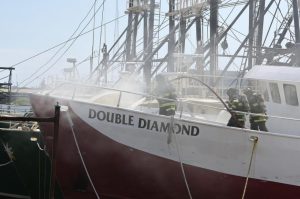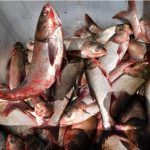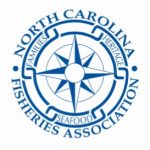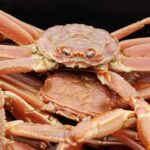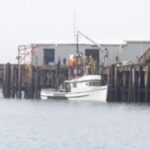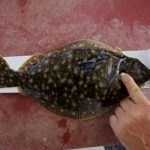Daily Archives: March 30, 2016
Spreading misinformation about our fisheries
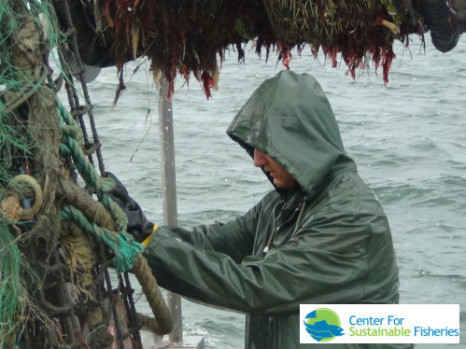 Anyone knowledgeable about the commercial fisheries of the United States will find nothing original in the op-ed piece recently submitted to the New York Times by the environmental organization Oceana. Even its title ‘A Knockout Blow for American Fish Stocks’ is misleading. American fish stocks are healthy. NOAA’S annual report to Congress, submitted at the end of 2014 showed that only twenty-six of the three hundred and eight fish stocks assessed were subject to overfishing. ‘Overfishing’ occurs when too many fish are removed from a population to produce maximum sustainable yield. As a scientific term it is quite misleading, carrying, as it does, the clear implication that low stock assessments result solely from fishing pressure; whereas ‘overfishing’ can result from a number of other factors, such as changes in water temperature or salinity, degraded habitat and increased predation. Read the article here 21:20
Anyone knowledgeable about the commercial fisheries of the United States will find nothing original in the op-ed piece recently submitted to the New York Times by the environmental organization Oceana. Even its title ‘A Knockout Blow for American Fish Stocks’ is misleading. American fish stocks are healthy. NOAA’S annual report to Congress, submitted at the end of 2014 showed that only twenty-six of the three hundred and eight fish stocks assessed were subject to overfishing. ‘Overfishing’ occurs when too many fish are removed from a population to produce maximum sustainable yield. As a scientific term it is quite misleading, carrying, as it does, the clear implication that low stock assessments result solely from fishing pressure; whereas ‘overfishing’ can result from a number of other factors, such as changes in water temperature or salinity, degraded habitat and increased predation. Read the article here 21:20
Coast Guard dewaters 2 sinking fishing boats, rescues crews off Massachusetts
 The U.S. Coast Guard says it rescued crews from two sinking fishing boats off the coast of Massachusetts. The Coast Guard said it responded to two separate rescue calls on Wednesday from boats that were taking on water. It says the first call came in around 4:30 a.m. from the vessel Silver Fox about seven miles southeast of Monomoy Island. Crews arrived with dewatering pumps and escorted Silver Fox to Hyannis Harbor by 9 a.m. Meanwhile, a call came in around 6:45 a.m. from the crew of Christina Eleni near Gloucester Harbor. Crews brought Christina Eleni to the Gloucester state fish pier safely. Read the rest here, – watch video here 20:45
The U.S. Coast Guard says it rescued crews from two sinking fishing boats off the coast of Massachusetts. The Coast Guard said it responded to two separate rescue calls on Wednesday from boats that were taking on water. It says the first call came in around 4:30 a.m. from the vessel Silver Fox about seven miles southeast of Monomoy Island. Crews arrived with dewatering pumps and escorted Silver Fox to Hyannis Harbor by 9 a.m. Meanwhile, a call came in around 6:45 a.m. from the crew of Christina Eleni near Gloucester Harbor. Crews brought Christina Eleni to the Gloucester state fish pier safely. Read the rest here, – watch video here 20:45
New Zealand: Jamie Briggs calls for seal cull in Coorong and Lower Lakes
Politicians and council mayors have called for the state government to act on the exploding 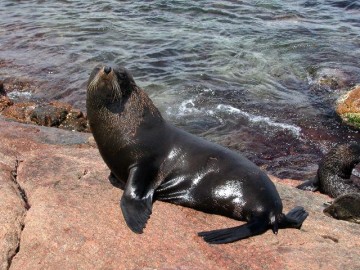 population New Zealand fur seal in the Coorong and Lower Lakes. Federal Member for Mayo Jamie Briggs wrote to minister Jay Weatherill asking for the state government to consider population management of seals because of the impact on commercial fishing operators. “While I appreciate it is a difficult political decision to engage in population management, I believe the time has arrived where this must be undertaken,” Mr Briggs said. He said the sustainability of businesses and the local environment were at risk. Read the rest here 17:05
population New Zealand fur seal in the Coorong and Lower Lakes. Federal Member for Mayo Jamie Briggs wrote to minister Jay Weatherill asking for the state government to consider population management of seals because of the impact on commercial fishing operators. “While I appreciate it is a difficult political decision to engage in population management, I believe the time has arrived where this must be undertaken,” Mr Briggs said. He said the sustainability of businesses and the local environment were at risk. Read the rest here 17:05
Lobster Boat Passes from One Generation to the Next in Friendship
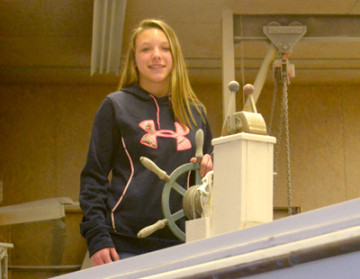 A lobster boat with a long history of plying the waters around the Friendship peninsula will stay in the fishing community, changing hands from one generation to another, thanks to a generous donation. Bill Ambrose, of North Yarmouth, the boat’s previous owner and a frequent visitor to his family’s cottage in Friendship, wanted to pass his historic fishing vessel, Caroline, on to a young lobsterman. Bill Ambrose passed away in September 2015 at the age of 77, from pancreatic cancer. Prior to his passing, he met Taylah Reed, a freshman at Medomak Valley High School, through Reed’s grandfather, Henry Thompson Sr. Read the rest here 14:36
A lobster boat with a long history of plying the waters around the Friendship peninsula will stay in the fishing community, changing hands from one generation to another, thanks to a generous donation. Bill Ambrose, of North Yarmouth, the boat’s previous owner and a frequent visitor to his family’s cottage in Friendship, wanted to pass his historic fishing vessel, Caroline, on to a young lobsterman. Bill Ambrose passed away in September 2015 at the age of 77, from pancreatic cancer. Prior to his passing, he met Taylah Reed, a freshman at Medomak Valley High School, through Reed’s grandfather, Henry Thompson Sr. Read the rest here 14:36
Number of NH groundfishermen continues to decline
 The number of New Hampshire boats fishing for groundfish has continued to decline, with only five full-time groundfishermen left in the state. Fishermen have been catching haddock, cod and flounder off the coast and selling it in New Hampshire for centuries. But fishermen said that quotas and regulations over the past decade that are meant to protect groundfish have made it almost impossible to make a living. The regulations have also affected other fishermen. At Tuesday’s regional meeting of the New England Fishery Management Council, some complained they were unable to catch herring to use as bait because they were in the same area as regulated groundfish. Video, Read the rest here 13:08
The number of New Hampshire boats fishing for groundfish has continued to decline, with only five full-time groundfishermen left in the state. Fishermen have been catching haddock, cod and flounder off the coast and selling it in New Hampshire for centuries. But fishermen said that quotas and regulations over the past decade that are meant to protect groundfish have made it almost impossible to make a living. The regulations have also affected other fishermen. At Tuesday’s regional meeting of the New England Fishery Management Council, some complained they were unable to catch herring to use as bait because they were in the same area as regulated groundfish. Video, Read the rest here 13:08
Athearn Marine Agency Boat of the Week: 37′ Repco Lobster boat Cat 3208T
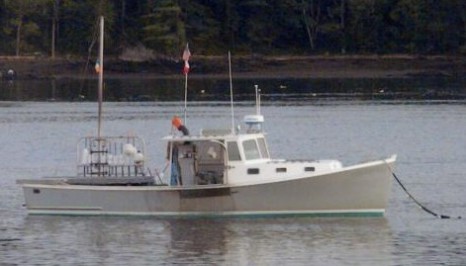 Specifications, information and 7 photo’s click here To see all the boats in this series, Click here 11:39
Specifications, information and 7 photo’s click here To see all the boats in this series, Click here 11:39
A Maine lobster fishing community confronts their changing climate
 Over the past 40 years, some lobstermen in South Thomaston, Maine, say that they could “set their watches” by the start of the lobster shedding event each season. In 2012, though, extreme warm ocean temperatures—an ocean heat wave—combined with early and repeated lobster shedding. The obvious changes in lobsters during this event galvanized many lobstermen to take the impacts of climate change seriously. More than 127 million pounds of lobsters were caught in 2012—an increase of approximately 18 million pounds over 2011, but prices for the larger-than-expected catch were the second-lowest on record—second only to the Great Depression year of 1939. The price drop caused hardship and anguish in the lobstering community and beyond. Video, Read the rest here 10:55
Over the past 40 years, some lobstermen in South Thomaston, Maine, say that they could “set their watches” by the start of the lobster shedding event each season. In 2012, though, extreme warm ocean temperatures—an ocean heat wave—combined with early and repeated lobster shedding. The obvious changes in lobsters during this event galvanized many lobstermen to take the impacts of climate change seriously. More than 127 million pounds of lobsters were caught in 2012—an increase of approximately 18 million pounds over 2011, but prices for the larger-than-expected catch were the second-lowest on record—second only to the Great Depression year of 1939. The price drop caused hardship and anguish in the lobstering community and beyond. Video, Read the rest here 10:55
LIFO (Last in-First out) numbers need a closer look: economist
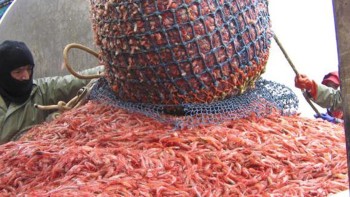 Debate around the last in, first out (LIFO) policy for the allocation of shrimp quotas rages, even as the Department of Fisheries and Oceans begins to re-evaluate applying its quota cuts to inshore fishermen before any larger, year-round enterprises. At the Comfort Inn in St. John’s Tuesday afternoon, made a presentation at a gathering of the St. John’s Board of Trade, saying more study would help any facts-based debate and decision-making around LIFO. He told his audience, based on figures available, he would expect the province’s GDP to fall $540 for every tonne of shrimp transferred from the year-round fleet to the inshore fishery. Read the rest here 09:20
Debate around the last in, first out (LIFO) policy for the allocation of shrimp quotas rages, even as the Department of Fisheries and Oceans begins to re-evaluate applying its quota cuts to inshore fishermen before any larger, year-round enterprises. At the Comfort Inn in St. John’s Tuesday afternoon, made a presentation at a gathering of the St. John’s Board of Trade, saying more study would help any facts-based debate and decision-making around LIFO. He told his audience, based on figures available, he would expect the province’s GDP to fall $540 for every tonne of shrimp transferred from the year-round fleet to the inshore fishery. Read the rest here 09:20
Strong sockeye run for Upper Cook Inlet, weaker run for Lower Cook Inlet
 The Upper Cook Inlet commercial fishing industry will see a spike in sockeye salmon harvest this year, if the Alaska Department of Fish & Game’s forecast holds true. Fish & Game forecast a total of 7.1 million sockeye salmon to return to the Upper Cook Inlet streams and rivers, with 4.1 million allocated to commercial harvest. That number is about 1.1 million more than the 20-year average and about 1 million more than the total commercial harvest in 2015. Most of the increase will be fish headed for the Kenai River, which will see approximately one million more sockeye salmon than the 20-year average, according to Fish & Game’s forecast. Read the rest here 08:27
The Upper Cook Inlet commercial fishing industry will see a spike in sockeye salmon harvest this year, if the Alaska Department of Fish & Game’s forecast holds true. Fish & Game forecast a total of 7.1 million sockeye salmon to return to the Upper Cook Inlet streams and rivers, with 4.1 million allocated to commercial harvest. That number is about 1.1 million more than the 20-year average and about 1 million more than the total commercial harvest in 2015. Most of the increase will be fish headed for the Kenai River, which will see approximately one million more sockeye salmon than the 20-year average, according to Fish & Game’s forecast. Read the rest here 08:27

































